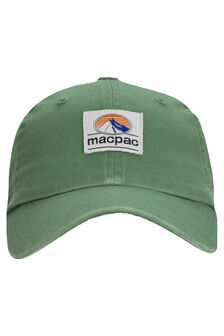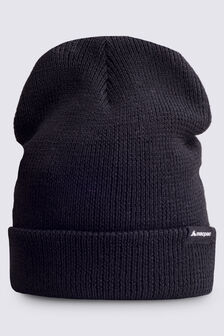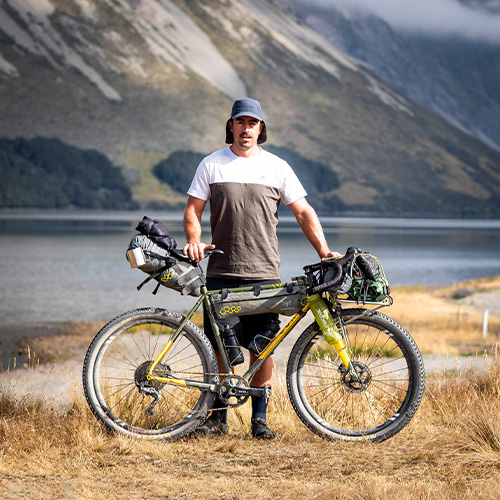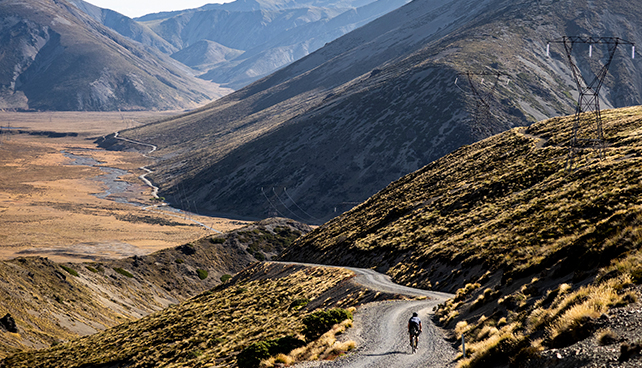
We’ve partnered with NZ Cycling Journal to bring you a new three-part series on bikepacking. (Check out Part 1 – all about the bikes of bikepacking, here). This week we’re covering the kit/apparel required on multi-trail adventures.
NZ Cycling Journal have had plenty of bikepacking adventures off the grid over the past few years and love sharing their insights on the gear that makes it all happen. Now, more than ever, it’s an awesome time to explore local, and discover the ‘best of home’.
Last summer we took on a self-supported bikepacking adventure over four days in the upper South Island. We wanted to get further and deeper into the backcountry, so camping was the best option. The route took us through Rainbow Station, to St Arnaud then Hanmer Springs and finally onto the St James Cycle Trail. Here’s a brief breakdown of the kit and apparel we used.

Bikepacking Kit Overview
Whilst bicycle touring has existed for yonks, bikepacking has been the trend for those favoring routes that are more remote – think gravel, rough dirt roads and even some singletrack. The routes are demanding, and the equipment needs to meet the demands, it must be light and robust so the traditional four-pannier bike-touring setup won’t really work. Bikepacking bags were designed for this style of riding. The name of the game is lighter and smaller luggage – so the bike can still be agile and fast enough when packed with your supplies and gear whilst tackling the rough terrain.
So, there’s a ton of bikepacking bags out there, many are good, and some are not so good. The main thing you want to ask yourself is – what do I actually need/want to take? – and bear in mind your legs will have to carry the weight of the load! A few more questions to work through are – how many days are you heading away for, is there any accommodation or will you need to be self-sufficient, what’s the terrain, are there any services on route? The list goes on, but you get the point. Basically, before embarking on any bikepacking adventure, do your research. All of this will determine the number of bags and the volume needed.
Bikepacking Bags
There are a plethora of bikepacking bags available on the market and it can be a bit overwhelming to make a choice! It’s worth looking for bags that allow you to keep your load flexible. It’s the ease of access into the bags that’s important – especially at the end of long day when you’re fatigued. Big volume bags are great for stuffing a lot of things into but they’re not the easiest when trying to find things.
I’d suggest multiple bags – some large volume for your overnight gear and other smaller volume for easy access when you’re riding. You’ll need to get at things such as food, another layer/jacket and other essentials. Trust me you don’t want to be emptying your bag contents everywhere and then having to repack them! Durability is another important factor – think straps, bag material, buckles and the like. I’ve had numerous occasions when these things don’t work or break when you’re on a bikepacking trip which isn’t ideal. So, just do your homework and ensure the bags are robust and durable. Lastly, ensure they’re waterproof, we live in a country where it rains often – you want to make sure your bag contents is kept dry. There’s some great waterproofing material out there so again do your research. Otherwise just stuff your things into dry bag and slip inside your bikepacking bag.

I’d suggest multiple bags – some large volume for your overnight gear and other smaller volume for easy access when you’re riding. You’ll need to get at things such as food, another layer/jacket and other essentials. Trust me you don’t want to be emptying your bag contents everywhere and then having to repack them! Durability is another important factor – think straps, bag material, buckles and the like. I’ve had numerous occasions when these things don’t work or break when you’re on a bikepacking trip which isn’t ideal. So, just do your homework and ensure the bags are robust and durable. Lastly, ensure they’re waterproof, we live in a country where it rains often – you want to make sure your bag contents is kept dry. There’s some great waterproofing material out there so again do your research. Otherwise just stuff your things into dry bag and slip inside your bikepacking bag.
Here’s a brief overview of the main bikepacking bags available – there’s a ton more bikepacking bags but this is enough to get you started:
Frame Packs
The frame pack was conceived to allow storage within the bike’s triangle – the space formed by the top tube, seat tube and downtube. To keep it attached to your frame it’s tied down with a series of velcro straps. While there are some great pre-made options on the market, some might consider having a custom bag made for their frame. The frame bag is an excellent place to store heavier items as it maintains a low centre of gravity, bear in mind smaller frames and full suspension will have more limited capacities. We prefer to keep the option of mounting two water bottle cages, so use the half/partial – frame bags that are becoming quite popular.
Seat Packs
The seat pack may appear odd to the uninitiated, but don’t be fooled by its looks as this is the key piece in a bikepacking kit. It is often conical, or missile shaped and found wedged under the saddle rails and strapped to the seat post. Seat pack volume ranges from five to fourteen litres. The main benefit over the traditional pannier is less wind resistance and a much lighter weight. When venturing off-road they don’t flap around nosily and if you need to hike-a-bike (walk with your bike), which will inevitably happen, they won’t catch the back of your legs. This is the best investment you can make towards your bikepacking kit.
Handlebar Bags
The handlebars are the most natural spot to store gear. Since the beginning of bicycles, folks have been strapping bags to the bars. Purpose-made handlebar packs go one significant step further by featuring rugged handlebar connections, anti-abrasion patches to reduce damage from and gear levers, as well as additional accessory pockets. The rule of thumb is to keep front load relatively light, or your bike’s handling will suffer. Trust us, you don’t want to have a heavy load up front!
Macpac Legionnaire Hat
Our Price
NZ$35.99MEMBERS PRICE
20% OFFCLEARANCE
20% OFFSALE
20% OFFMacpac Men's Trekker Shorts
Our Price
NZ$95.99MEMBERS PRICE
40% OFFCLEARANCE
40% OFFSALE
40% OFFMacpac Women's Trekker Shorts
Our Price
NZ$95.99MEMBERS PRICE
40% OFFCLEARANCE
40% OFFSALE
40% OFFMacpac Rouleur Merino Cycling Sock
Our Price
NZ$23.99MEMBERS PRICE
20% OFFCLEARANCE
20% OFFSALE
20% OFF
Bikepacking Apparel Overview
It’s fair to say – there’s no bad weather, only bad clothing choices. And with the changeable New Zealand climate, you need to ensure you’ve got all bases covered – especially when you’re in the mountains. Packing for multi-day bikepacking focuses the mind like nothing else. The knowledge that you have to lug everything with you up the hills forces you to think very carefully about every single item.
A single, reliable, super-versatile product like a merino tee-shirt or long sleeve shirt that with some canny layering can be worn every day in all conditions takes out a lot of cycling kit-related guesswork. As does comfortable and robust shorts, a good vest/wind breaker and a descent rain jacket. Cycling bib shorts are also a must and will provide comfort for those long days in the saddle. Off the bike think merino leggings, tops and a pair of warm socks.
Favourite Macpac items
This bikepacking trip was done during February, which is in the hight of our summer. We needed to ensure the garments were suitable in the warmth of the day but would also work to keep us warm once the temperature dropped. We particularly liked these pieces and found them as a go-to garment for the duration of the trip.
Macpac Legionnaire Hat – I don’t normally run these hats under my cycling helmet but found this hat ideal for keeping the suns rays off my face and neck. It also helped absorb the sweat. The old school style factor is a bonus!
Macpac Brand Merino 180 Tee – There’s nothing quite like wearing a tee on a bike it just feels so liberating. Ensuring minimal luggage is on your back also helps with fatigue – this is bikepacking so put your gear in the bags not on your back! I’m a big fan of merino it’s a good insulator in slightly cooler weather, which is what we started our day in. It also breathes incredibly well and is – slightly counterintuitively since it’s wool – one of the coolest fabrics to wear in hot weather, although bear in mind it does absorb moisture more than synthetic materials.
Macpac Ranger Shirt – This long-sleeved shirt is super versatile. Great on the bike and can be worn in the pub. This ultralight shirt keeps the sun’s rays with a UPF 50+ fabric rating. It’s made for adventure with its dual pockets to stash items in and multiple options to roll the sleeves up. They use Polygiene® odour control technology which keeps them feeling fresh hence why we lived in these shirts for the duration trip.
Macpac Trekker Pertex Equilibrium Softshell Shorts – The are the best shorts ever! So damn comfortable with the right amount of stretch. They work so well for riding and doing almost everything else in them. We flew down to the South Island in them, bikepacked in them and returned home in them. They didn’t faulter once and took all the abuse we could throw their way. These are by far the best item we had on the trip.
Below is the combination of Macpac apparel we used on our upper South Island bikepacking adventure.
- Macpac Nazomi Jacket
- Macpac Strider Hybrid Vest
- Macpac Transition Rain Jacket
- Macpac Escape Merino Hoody
- Macpac Uber Light Down Vest
- Macpac Brand Merino 180 Tee
- Macpac Great Walks Merino 180 Tee
- Macpac Limitless LS Tee
- Macpac Ranger Shirt
- Macpac Merino 180 Long Johns
- Macpac Merino 150 LS Top
- Macpac Trekker Pertex Equilibrium Softshell Shorts
- Macpac Legionnaire Hat
- Macpac Vintage Cap
Stay tuned for Bikepacking part three
The third instalment of the Bikepacking Gear Guide will drop next week, where we’ll cover all things camping related. For more content about exploring life on two wheels, check out the NZ Cycling Journal website or follow us on Instagram.

Macpac Women's 220 Merino Long Sleeve Top
Our Price
NZ$103.99MEMBERS PRICE
20% OFFCLEARANCE
20% OFFSALE
20% OFFMacpac Men's Uber Light Down Vest
Our Price
NZ$79.00MEMBERS PRICE
12% OFFCLEARANCE
12% OFFSALE
12% OFFMacpac Men's Lyell 180 Merino Long Sleeve T-Shirt
Our Price
NZ$97.99MEMBERS PRICE
30% OFFCLEARANCE
30% OFFSALE
30% OFFMacpac Men's 180 Merino Long Johns
Our Price
NZ$87.99MEMBERS PRICE
20% OFFCLEARANCE
20% OFFSALE
20% OFFMacpac Vintage Cap
Our Price
NZ$20.00MEMBERS PRICE
17% OFFCLEARANCE
17% OFFSALE
17% OFFMacpac Chunky Merino Blend Beanie
Our Price
NZ$34.99MEMBERS PRICE
30% OFFCLEARANCE
30% OFFSALE
30% OFF












